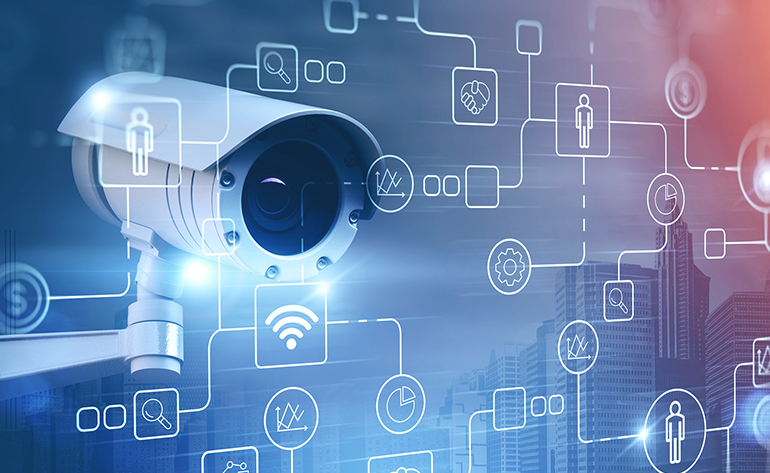SURVEILLANCE SOLUTION

SURVEILLANCE SOLUTION
NetSolXperts offer high quality security system to improve security and deter unauthorized activities. It serves as a preventive measure against potential threats and helps maintain a safe environment.
A CCTV (Closed-Circuit Television) security system is a video surveillance system that uses cameras to monitor and record activities in a specific area or property. It consists of cameras, a recording device, and a monitor for live viewing or playback. CCTV security systems are widely used in various settings, including homes, businesses, public places, and institutions, to enhance security and prevent unauthorized activities.
Components of a CCTV Security System:
Cameras
CCTV cameras capture video footage of the monitored area. They come in different types, such as dome cameras, bullet cameras, PTZ cameras, and hidden cameras, as discussed earlier.
Recording Device
The recorded video footage is stored in a recording device, which can be a Digital Video Recorder (DVR) or a Network Video Recorder (NVR). DVRs use analog cameras, while NVRs are compatible with IP (Internet Protocol) cameras.
Monitor
A monitor allows for live viewing of the camera feeds or playback of recorded footage. It can be a dedicated monitor or a computer screen connected to the recording device.
Cabling and Wiring
CCTV systems require cabling to connect the cameras to the recording device. This includes power cables for providing electricity to the cameras and video cables to transmit the video signals.
Power Supply
Cameras need a power source to operate. Depending on the system, power can be supplied through a local power outlet or through Power over Ethernet (PoE) technology, which combines power and data transmission through a single network cable.
Storage
The recording device stores the video footage for a certain period. It can have built-in storage capacity or support external storage devices like hard drives or network-attached storage (NAS) systems.
Key Considerations for CCTV Security Systems:
Coverage Area
Determine the areas you want to monitor and assess the required camera coverage and placement for effective surveillance.
Resolution
Higher resolution cameras provide clearer and more detailed video footage. HD (720p or 1080p) and Ultra HD (4K) cameras offer enhanced image quality.
Night Vision
If surveillance is needed in low-light conditions, consider cameras with infrared (IR) LEDs or low-light sensitivity to capture clear images at night.
Motion Detection
Many CCTV systems offer motion detection capabilities, where cameras are triggered to record when motion is detected, conserving storage space and making it easier to review relevant footage.
Remote Access
Choose a system that allows for remote access and monitoring of camera feeds through mobile apps or web interfaces. This enables you to check the security of your property from anywhere.
Scalability
Consider the scalability of the CCTV system, especially if you may need to add more cameras in the future. Ensure the recording device can support the desired number of cameras.
Integration
Some CCTV systems can integrate with other security systems, such as alarms or access control systems, providing a comprehensive security solution.
Legal Considerations
Familiarize yourself with local laws and regulations regarding the use of CCTV systems, including privacy rights and data protection requirements.
Regular maintenance, such as cleaning camera lenses, checking connections, and updating firmware, is essential to ensure the CCTV system's optimal performance.
Overall, CCTV security systems can significantly enhance the safety and security of your property by providing real-time monitoring and recorded evidence, helping deter criminal activities and providing peace of mind.
